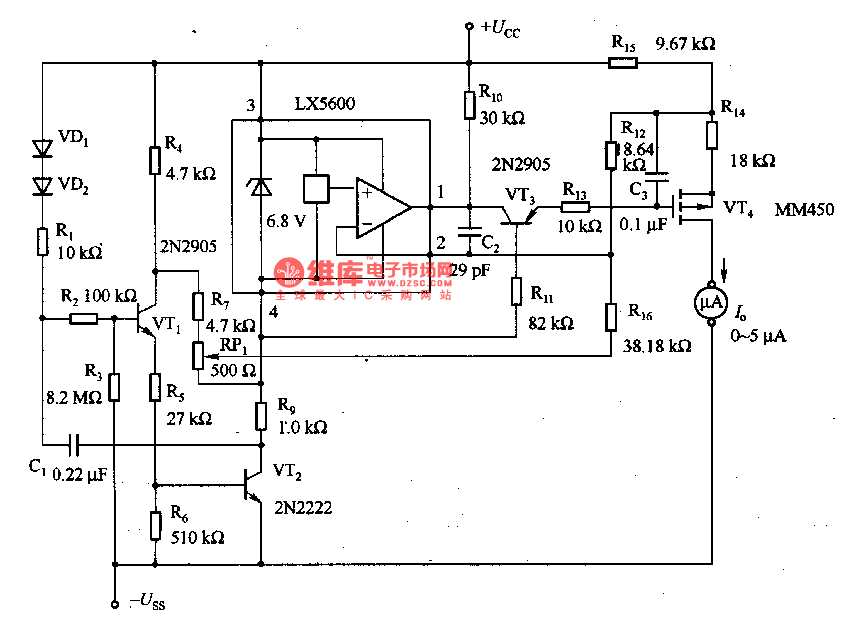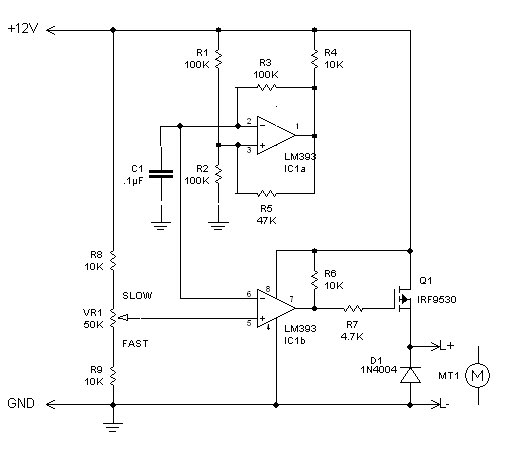
The thermometer circuit composed of LX5600

When this thermometer is utilized in a room environment, it operates intermittently, maintaining this operational state within the temperature measurement circuit due to the stable internal temperature. The astable multiresonance oscillator is composed of transistors VT1 and VT2, forming an interval oscillator circuit that samples data every second, with an interval time ratio of 0.
The described thermometer circuit employs an astable multiresonance oscillator configuration, which is key to its intermittent operation. The circuit is designed with two transistors, VT1 and VT2, configured to function as a flip-flop. This configuration allows the thermometer to alternate between high and low states, effectively sampling the ambient temperature at one-second intervals.
The choice of an astable multiresonance oscillator is significant as it provides a stable output frequency, which is essential for consistent temperature readings. The internal temperature of the thermometer remains relatively constant, minimizing fluctuations that could affect measurement accuracy. This characteristic enhances the reliability of the temperature test circuit, ensuring that readings reflect the true ambient conditions without sharp variations.
The interval time ratio of 0 indicates that the oscillator is continuously operating without a defined pause, allowing for real-time monitoring of temperature changes. The output from the oscillator can be fed into a microcontroller or analog readout device, where the sampled data can be processed and displayed.
In summary, this thermometer circuit effectively combines an astable multiresonance oscillator with a stable temperature measurement system, ensuring accurate and reliable temperature readings in a room environment through its intermittent operational capability.When this thermometer is used in the room, it can work in the intermittent way, and this working state can be kept in the temperature test circuit, because internal temperature doesn`t change sharply. The astable multi-resonance oscillator consists of VT1 and VT2, i.e the interval oscillator circuit, which samples per 1s, and the interval time ratio is 0..
🔗 External reference
The described thermometer circuit employs an astable multiresonance oscillator configuration, which is key to its intermittent operation. The circuit is designed with two transistors, VT1 and VT2, configured to function as a flip-flop. This configuration allows the thermometer to alternate between high and low states, effectively sampling the ambient temperature at one-second intervals.
The choice of an astable multiresonance oscillator is significant as it provides a stable output frequency, which is essential for consistent temperature readings. The internal temperature of the thermometer remains relatively constant, minimizing fluctuations that could affect measurement accuracy. This characteristic enhances the reliability of the temperature test circuit, ensuring that readings reflect the true ambient conditions without sharp variations.
The interval time ratio of 0 indicates that the oscillator is continuously operating without a defined pause, allowing for real-time monitoring of temperature changes. The output from the oscillator can be fed into a microcontroller or analog readout device, where the sampled data can be processed and displayed.
In summary, this thermometer circuit effectively combines an astable multiresonance oscillator with a stable temperature measurement system, ensuring accurate and reliable temperature readings in a room environment through its intermittent operational capability.When this thermometer is used in the room, it can work in the intermittent way, and this working state can be kept in the temperature test circuit, because internal temperature doesn`t change sharply. The astable multi-resonance oscillator consists of VT1 and VT2, i.e the interval oscillator circuit, which samples per 1s, and the interval time ratio is 0..
🔗 External reference
Warning: include(partials/cookie-banner.php): Failed to open stream: Permission denied in /var/www/html/nextgr/view-circuit.php on line 713
Warning: include(): Failed opening 'partials/cookie-banner.php' for inclusion (include_path='.:/usr/share/php') in /var/www/html/nextgr/view-circuit.php on line 713





